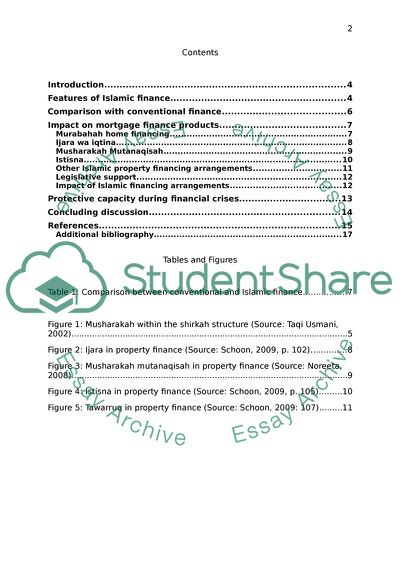Cite this document
(Islamic Finance: Comparison with Conventional Finance, Its Impact on Research Paper, n.d.)
Islamic Finance: Comparison with Conventional Finance, Its Impact on Research Paper. Retrieved from https://studentshare.org/macro-microeconomics/1745315-comparison-of-conventional-and-islamic-finance-detailed-study-of-impact-of-islamic-finance-on-mortgage-finance-products-like-equity-finance-reverse-mortgage-investment-loan-stamp-duty-issues-and-etc-could-islamic-finance-help-us-avoid-future-gfc
Islamic Finance: Comparison with Conventional Finance, Its Impact on Research Paper. Retrieved from https://studentshare.org/macro-microeconomics/1745315-comparison-of-conventional-and-islamic-finance-detailed-study-of-impact-of-islamic-finance-on-mortgage-finance-products-like-equity-finance-reverse-mortgage-investment-loan-stamp-duty-issues-and-etc-could-islamic-finance-help-us-avoid-future-gfc
(Islamic Finance: Comparison With Conventional Finance, Its Impact on Research Paper)
Islamic Finance: Comparison With Conventional Finance, Its Impact on Research Paper. https://studentshare.org/macro-microeconomics/1745315-comparison-of-conventional-and-islamic-finance-detailed-study-of-impact-of-islamic-finance-on-mortgage-finance-products-like-equity-finance-reverse-mortgage-investment-loan-stamp-duty-issues-and-etc-could-islamic-finance-help-us-avoid-future-gfc.
Islamic Finance: Comparison With Conventional Finance, Its Impact on Research Paper. https://studentshare.org/macro-microeconomics/1745315-comparison-of-conventional-and-islamic-finance-detailed-study-of-impact-of-islamic-finance-on-mortgage-finance-products-like-equity-finance-reverse-mortgage-investment-loan-stamp-duty-issues-and-etc-could-islamic-finance-help-us-avoid-future-gfc.
“Islamic Finance: Comparison With Conventional Finance, Its Impact on Research Paper”, n.d. https://studentshare.org/macro-microeconomics/1745315-comparison-of-conventional-and-islamic-finance-detailed-study-of-impact-of-islamic-finance-on-mortgage-finance-products-like-equity-finance-reverse-mortgage-investment-loan-stamp-duty-issues-and-etc-could-islamic-finance-help-us-avoid-future-gfc.


